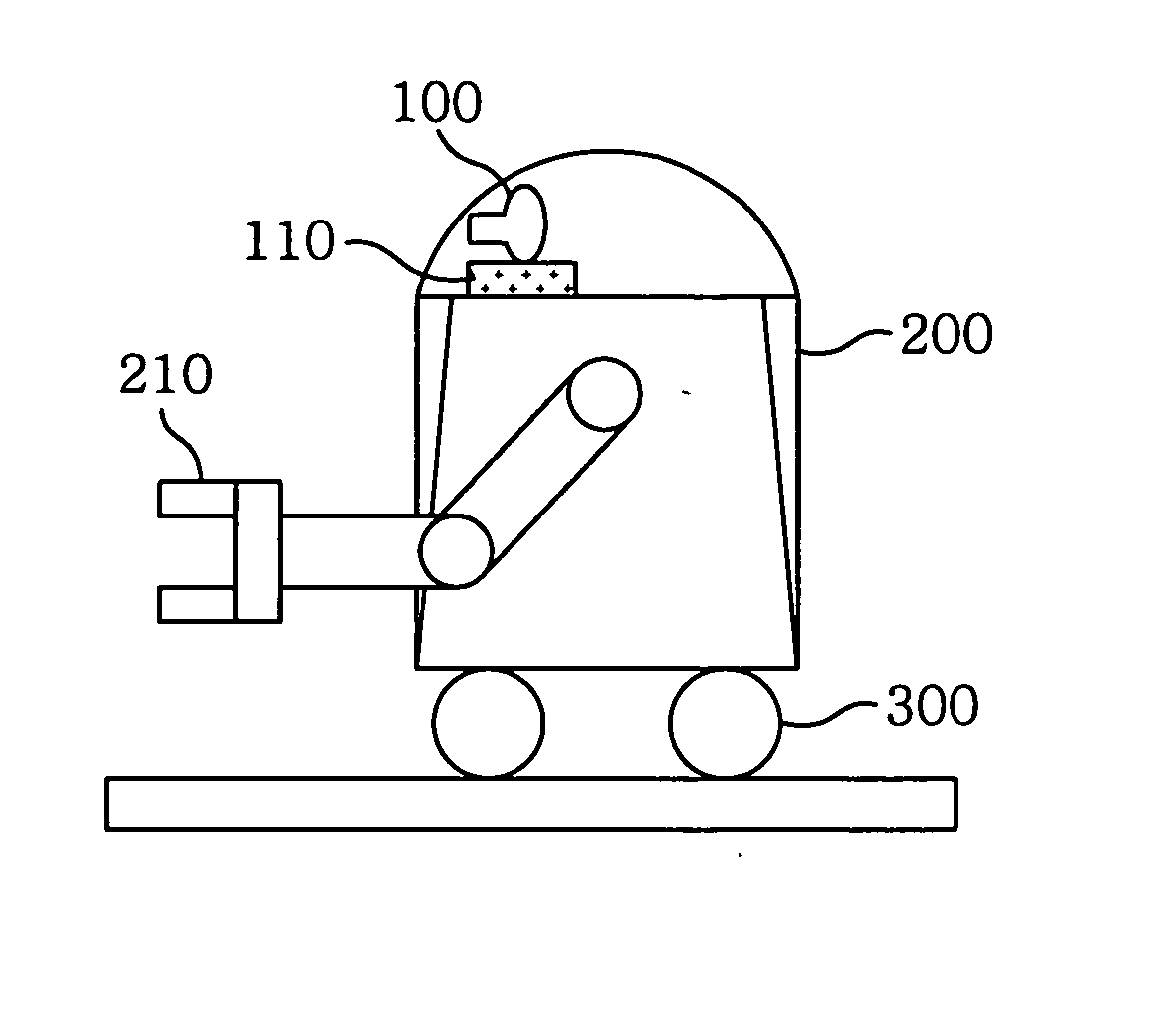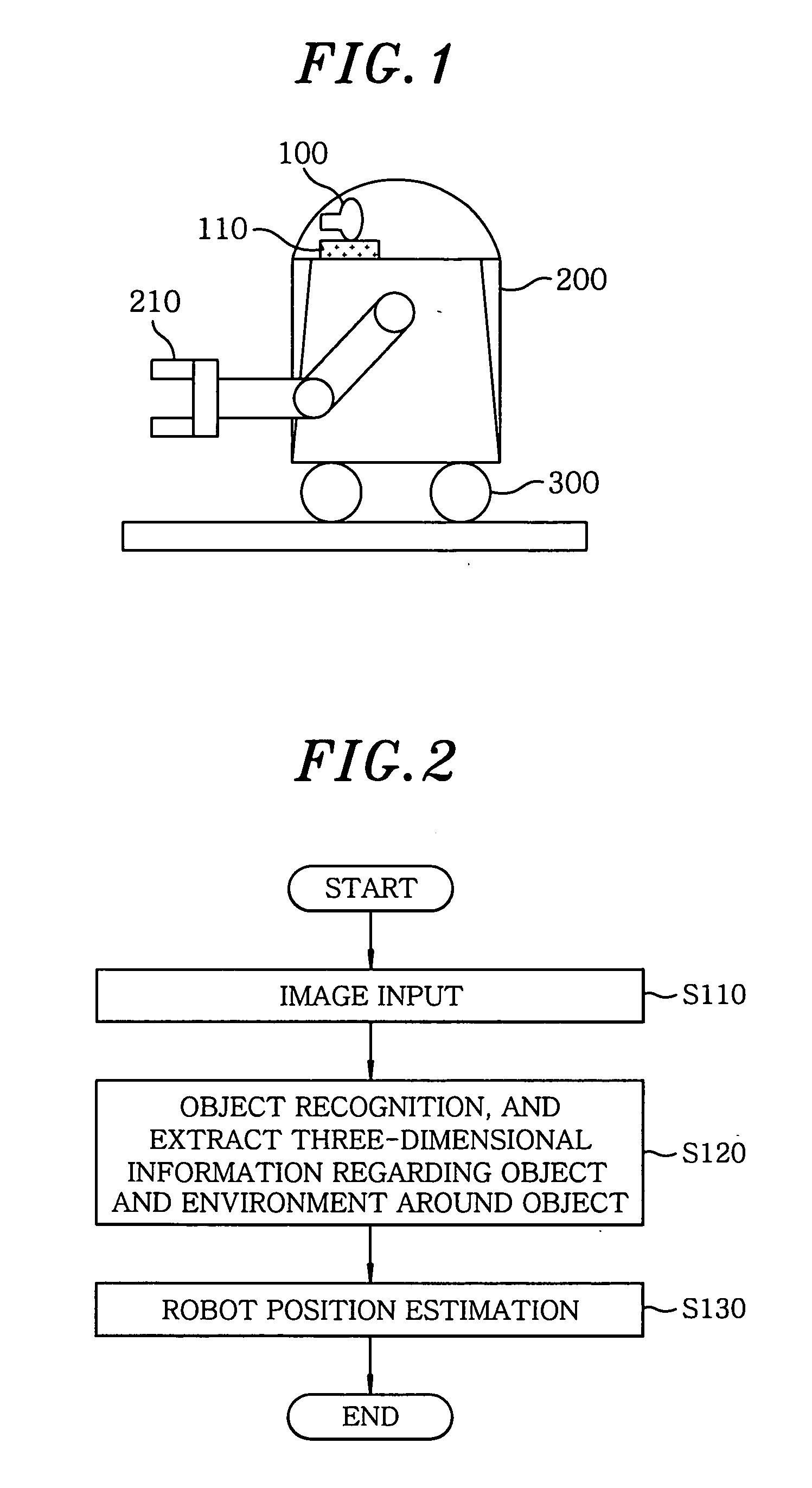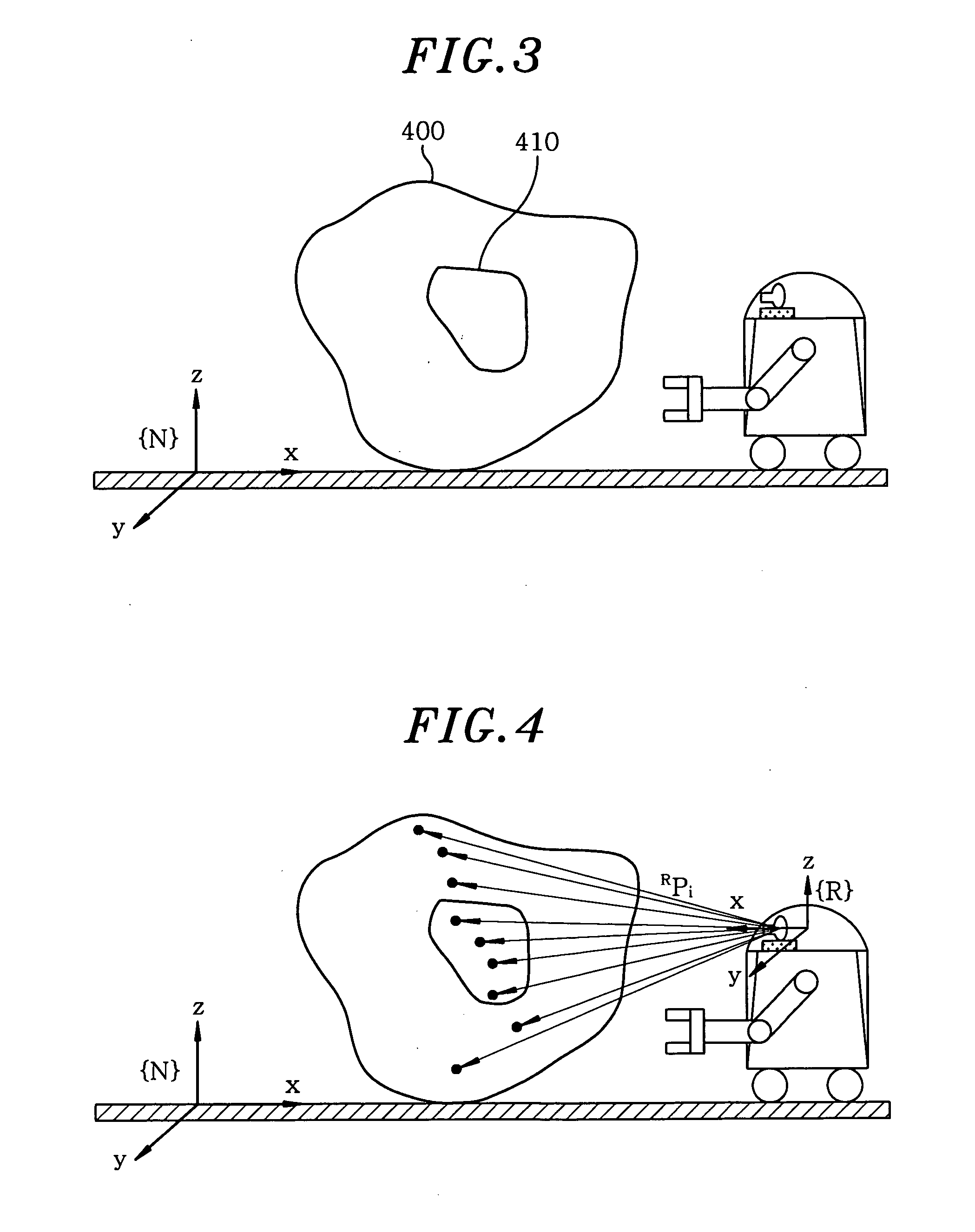Method for self-localization of robot based on object recognition and environment information around recognized object
- Summary
- Abstract
- Description
- Claims
- Application Information
AI Technical Summary
Benefits of technology
Problems solved by technology
Method used
Image
Examples
first embodiment
[0067]FIG. 9 is a flowchart illustrating a method for self-localization of a robot based on object recognition and an environment information around a recognized object in accordance with the present invention.
[0068]A method for self-localization of a robot based on object recognition and environment information around a recognized object in accordance with the first embodiment of the invention is applied to a case where a sensor provided in the camera unit 100 is an omni-directional stereo vision sensor. As shown in FIG. 9, the method for self-localization of a robot in accordance with the first embodiment of the invention includes an acquisition step S310 of acquiring an omni-directional environment image and stereo depth information, an object recognition step S320, a candidate node selection step S330 of selecting candidate nodes on which one or more objects are recognized, a three-dimensional position calculation step S340 of calculating the three-dimensional positions of the r...
second embodiment
[0094]FIG. 10 is a flowchart illustrating a method for self-localization of a robot based on object recognition and the environment around a recognized object in accordance with the present invention.
[0095]A method for self-localization of a robot based on object recognition and the environment around a recognized object in accordance with the second embodiment of the present invention is applied to a case where a sensor provided in the camera unit 100 is an omni-directional stereo vision sensor, and a final node on which the robot is located is predefined. As shown in FIG. 10, the method for self-localization of a robot in accordance with the second embodiment of the present invention includes an acquisition step S410 of acquiring an omni-directional environment image and stereo depth information, an object recognition step S420, a candidate node selection step S430 of selecting candidate nodes on which one or more objects are recognized, a three-dimensional position calculation st...
third embodiment
[0100]FIGS. 11A and 11B are flowcharts illustrating a method for self-localization of a robot based on object recognition and an environment around a recognized object in accordance with the present invention.
[0101]A method for self-localization of a robot based on object recognition and the environment around a recognized object in accordance with the third embodiment of the present invention is applied to a case where a sensor provided in the camera unit 100 is a stereo camera having a viewing angle in a predetermined range, not 360°, and the position of the robot is estimated by recognition of two-objects in the environment in order to reduce a position estimation time of the robot. As shown in FIGS. 11A and 11B, the method for self-localization of a robot in accordance with the third embodiment of the present invention includes an acquisition step S510 of acquiring an environment image in a direction and stereo depth information, an object recognition step S515, a confirmation s...
PUM
 Login to View More
Login to View More Abstract
Description
Claims
Application Information
 Login to View More
Login to View More - R&D
- Intellectual Property
- Life Sciences
- Materials
- Tech Scout
- Unparalleled Data Quality
- Higher Quality Content
- 60% Fewer Hallucinations
Browse by: Latest US Patents, China's latest patents, Technical Efficacy Thesaurus, Application Domain, Technology Topic, Popular Technical Reports.
© 2025 PatSnap. All rights reserved.Legal|Privacy policy|Modern Slavery Act Transparency Statement|Sitemap|About US| Contact US: help@patsnap.com



